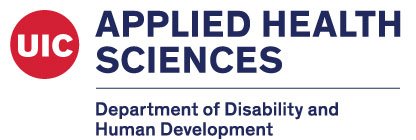By Karis Gorak
A circle with a flower that separates the circle into five equal sections with a stick figure child in the middle. The sections are different colors and have an image and words in each one. They are labeled: Pediatrician, Teachers/Daycare, Social Worker & Advocates, Therapists, and Parents & Caregivers.
Before I ever put on a white coat, I stood at the front of a classroom.
As a bilingual early childhood educator, I spent my days singing songs in Spanish, redirecting toddlers from block towers to circle time, and watching little lightbulbs go off when a new concept clicked. But I also watched children struggle—and one child, in particular, has stayed with me.
He had difficulty with transitions, often melting down between activities. His expressive language was limited, and his frustration showed up in challenging behaviors. I suspected a speech delay and possibly a learning disability, but like many first-time parents, they didn’t yet know what was typical—or what might be cause for concern—so seeking help wasn’t even on their radar. My fellow teachers hesitated to speak up. "We're not doctors," one whispered. "We don't want to offend anyone." There was fear—of overstepping, of stigma, of getting it wrong.
So, nothing happened. We adjusted. We accommodated. But he didn’t get evaluated. He didn’t get services. And eventually, he moved on—still struggling.
Now, as a medical and PhD trainee in developmental research and child health, I carry that memory with me.
That classroom experience taught me early that children with developmental delays often fall through the cracks—not because no one notices, but because no one feels empowered to act. Parents may be unsure of what behaviors are typical. Teachers may feel ill-equipped to initiate difficult conversations. Providers may not fully understand how the special education system works, or how to write reports that support a child's access to services. These silos—between home, school, and clinic—leave children waiting.
In my current training, I’ve come to see how powerful it can be to bridge those silos. I understand now that the child I taught likely qualified for early intervention or special education support but missed that opportunity because of system-level failures—gaps in knowledge, access, and communication. And I understand how often this story plays out, especially in communities historically excluded from equitable care and education.
My time as a teacher deeply informs how I approach medicine and research today. I know what it feels like to fill out endless behavior logs, to try to differentiate instruction on the fly, to want to help but not know how. I also know how meaningful it is when providers collaborate with educators, not from a place of authority, but from partnership.
One of the things I appreciate most about my IL LEND fellowship is how it encourages interdisciplinary thinking. We talk not just about diagnoses but about systems. Not just about clinical outcomes, but about family voices. We learn from educators, therapists, physicians, parents, and self-advocates—because that’s what it takes to support a child well.
If I could go back and talk to that little boy’s family now, I’d ask: what matters most to you about his day? What are your biggest worries? I’d tell them about Early Intervention and walk them through what a referral looks like. If I were talking to his teachers, I’d say: your observations are valuable. You don’t have to be a doctor to notice when a child needs help. Let’s work together.
We owe it to our students and our patients to break down the barriers between disciplines. Children don’t experience their challenges in compartments—so why should we?








